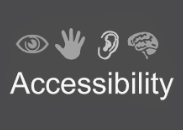Surface acoustic wave (SAW) technology has become a promising choice among the leading touchscreens available on the market. Although not as popular as capacitive or resistive, SAW touchscreens account for feasible alternatives offering several benefits.
With the advancing technology and growing competition to provide the best experience for consumers, many OEMs are still choosing SAW technology for their touch applications. As a result, SAW touchscreens are still preferred for powering many touch devices.
Here are the five facts about SAW touch technology that make them one of the best choices for many applications.
Highly Sensitive:
SAW touchscreens are known for high sensitivity. Unlike resistive technology, a light touch on the display enables the sensor to register the command and respond as per the required action. There’s no need to exert any pressure to press or tap the interface. The higher sensitivity allows SAW touch displays to swiftly register the command.
Ultrasonic Sound Waves:
The name “surface acoustic wave” is given to its function based on ultrasonic sound waves, commonly known as acoustic waves, to detect touch commands. SAW technology projects ultrasonic acoustic waves across the display’s surface which are invisible to the naked eye. Touching or tapping on the display by a finger or a stylus absorbs these sound waves. The controller electronics can then identify the location of the touch by the interruption of time it takes from the emission of the sound pulse to when it is heard or supposed to be heard by the acoustic receivers on the sensor’s perimeter.
Bare Finger, Gloved Finger or Stylus:
A SAW touchscreen device allows operation by using either a bare finger, a gloved finger, or a special sound absorbing stylus. As SAW touch technology uses the disturbance of sound waves to register touch commands, any sound absorbing object can trigger a touch command. This fact becomes crucial because not all touchscreen devices work with a gloved finger, for example, capacitive touchscreens typically work with only a bare finger or special stylus.
Durable and Long-Lasting:
SAW touchscreen devices are pretty durable and long-lasting. They have all-glass construction with no coatings to wear out, contributing to their longer life. Even being in regular use, applications designed with SAW touch technology experience negligible wear. This is one of the reasons why some OEMs prefer this technology for their applications.
Superior Optical Clarity:
SAW touchscreens offer superior image quality. These touchscreens are designed with glass plates having no coatings, just clear glass. Displays of applications equipped with SAW technology appear clear, offering high resolutions. Hence, SAW touchscreens become a preferred choice for applications requiring excellent optical clarity.
Wrapping Up!
While all the above facts about SAW touchscreens make them considerably ideal solutions for touch applications, the factor of superficial contamination creates a gap, making them not so preferable a choice, especially for applications in outdoor environments. The performance of SAW touchscreen devices is affected by the dirt, dust or other debris that accumulates on the display interface. The contaminants on the display surface block ultrasonic sound waves, essentially triggering false touch commands or inhibiting he flow of acoustic waves causing the sensor to be non-responsive or become uncalibrated.
For indoor applications, you can go with SAW touch technology. However, if you need touchscreens for outdoor applications, you can check with A D Metro. They offer an innovative range of touchscreens like ULTRA Armored Resistive and Projected Capacitive (PCAP) touchscreens for the best results.
For more details, visit https://admetro.com/.







